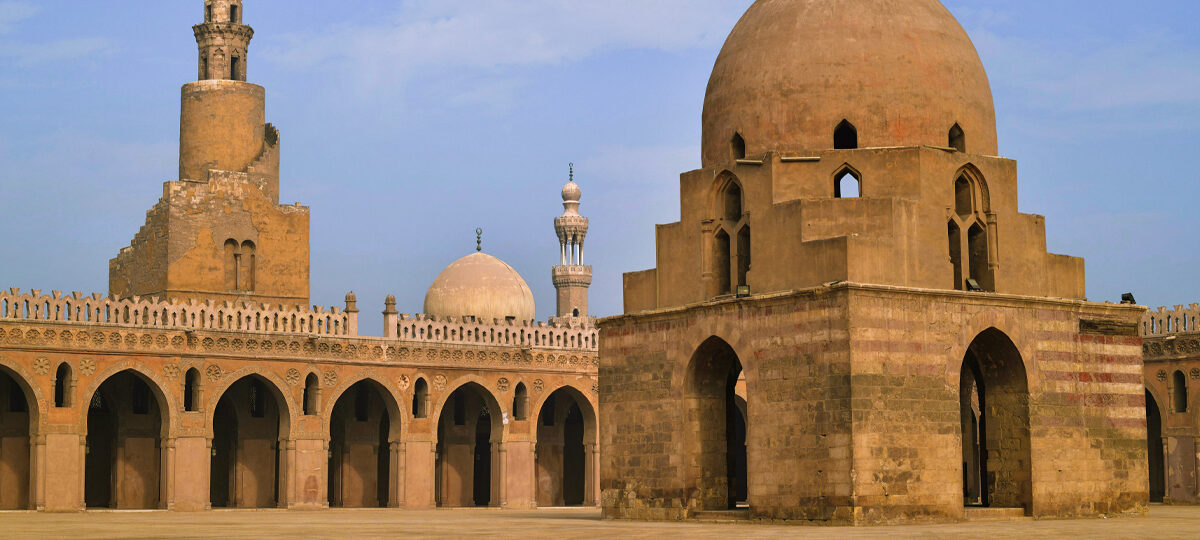Ahmad Ibn Tulun Mosque
The Ibn Tulun Mosque is not only the most land-sized mosque in the city, but it is also the oldest. It is also thought to be the most important mosque in the city as a whole. Ibn Tulun, who was the governor of Fustat during the Abbasid Caliphate in Baghdad in the ninth century and oversaw the building’s construction from 876 to 879 AD, is given credit for building it.
Ibn Tulun built the Moorish-style mosque.
The mosque, which is 2.5 hectares in size, was built so that worshipers could get away from the busy city around them. It was full of shops and stands where you could do exactly that. Ibn Tulun got ideas for the mosque’s design from his home country, specifically the “Old Samarra Mosque.” He also added his own ideas to the design. Architectural historians believe that the mosque was the first building in the world to have a pointed arch. This was more than 200 years before the Gothic arch was built in Europe.
Another thing that makes the mosque different from other buildings is that it has a fence around it to protect it from the weather. The Haram al-Sharif in Baghdad is surrounded by walls that were built to keep the holy site separate from the rest of the city. In Egypt, on the other hand, this area was eventually filled with the homes of wealthy Egyptians, who cut holes in the walls of the mosque so that only their homes could get inside. Rich Egyptians who lived in these houses were also given special rights inside the mosque.

Except for the two homes that are now part of the Gayer Anderson Museum, all of these buildings were torn down and turned into parking lots. In the 1930s, Robert Gayer Anderson, a well-known figure in the British colonial government, lived in these buildings. The government of Egypt gave him permission to do so. He was an expert in Oriental studies and a passionate collector. He was also in charge of decorating the house with pieces of art, furniture, and carpets from his own collection while the property was being renovated.
When he left Egypt in 1942, he gave all of his furniture and other household items to the Egyptian government as part of his departure. The palace just had a lot of work done on it, so all of the furniture is brand new. It is thought by many to be one of the best examples of 17th-century Cairo architecture that has been kept anywhere in the city. The most recent James Bond movie, “The Spy Who Loved Me,” was shot entirely inside the castle.
Even though they only see a small number of tourists each day, these two places are without a doubt some of the most exciting in all of Cairo. The fact that a museum and a mosque, both of which have been carefully restored, are right next to each other gives visitors a unique look at Cairo’s history. Because it is in the Sayeda Zeinab neighborhood of Cairo, close to both the Sultan Hassan Mosque and the Salah El-Din Citadel, it is easy to combine a visit to these two of Cairo’s most famous sights into a single trip.

